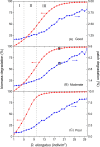Assessing the potential impact of grasshopper outbreaks on Patagonian wetlands through mathematical modelling
- PMID: 39753663
- PMCID: PMC11698732
- DOI: 10.1038/s41598-024-83959-3
Assessing the potential impact of grasshopper outbreaks on Patagonian wetlands through mathematical modelling
Abstract
Herbivorous insects occasionally produce population outbreaks that can alter the availability of food resources for other animals and cause economical losses. In the Patagonian steppe, wetlands are important ecosystems due to their environmental and ecological functions. Within these ecosystems, there is a wide diversity of phytophagous insects, among which two species of orthoptera are predominant: Dichroplus elongatus (usually considered a pest) and D. vittigerum. These species are native to Argentina and commonly feed on grasses and herbaceous plants present in wetlands and crops. To evaluate the consequences of grasshopper population outbreaks on wetlands, we conducted an interdisciplinary study that included field and laboratory experiments, along with the development of a mathematical model. We determined the plant cover of the most representative species included in the diet of grasshoppers in a specific Patagonian wetland and performed feeding experiments to determine their consumption rate and preferences. We employed this information to develop a spatially explicit stochastic model based on individuals. This model demonstrates that the potential impact of these species depends on both their densities and the wetland's vegetal biomass. Our results enabled us to define pest thresholds for various realistic scenarios. Conducting such studies is crucial for developing early warning strategies and promoting the conservation and management of natural environments.
Keywords: Dichoroplus sp.; Acrididae pests; Insect herbivory; Spatially explicit individual based model.
© 2024. The Author(s).
Conflict of interest statement
Declarations. Competing interests: The authors declare that they have no known competing financial interests or personal relationships that could have appeared to influence the work reported in this paper.
Figures





References
-
- Crawley, M. J. Insect herbivores and plant population dynamics. Annu. Rev. Entomol.34, 531–564. 10.1146/annurev.en.34.010189.002531 (1989).
-
- Huntly, N. Herbivores and the dynamics of communities and ecosystems. Annu. Rev. Ecol. Syst.22(1), 477–503. 10.1146/annurev.es.22.110191.002401 (1991).
-
- Deraison, H., Badenhausser, I., Börger, L. & Gross, N. Herbivore effect traits and their impact on plant community biomass: an experimental test using grasshoppers. Funct. Ecol.29(5), 650–661. 10.1111/1365-2435.12362 (2014).
-
- Mariottini, Y., de Wysiecki, M. L. & Lange, C. Pérdida de forraje ocasionada por diferentes densidades de Dichroplus maculipennis (Acrididae: Melanoplinae) en una pastura de Festuca arundinacea Schreb. RIA4(1), 92–100 (2018).
Publication types
MeSH terms
Grants and funding
- PICT 2020-0875/Ministry of Science, Technology and Productive Innovation, Argentina | Agencia Nacional de Promoción Científica y Tecnológica (National Agency for Science and Technology, Argentina)
- 2023-PD-INTA I074/Instituto Nacional de Tecnología Agropecuaria (INTA)
- 2023-PE-L01-I031/Instituto Nacional de Tecnología Agropecuaria (INTA)
- 2023-PE-L01-I037/Instituto Nacional de Tecnología Agropecuaria (INTA)
LinkOut - more resources
Full Text Sources

